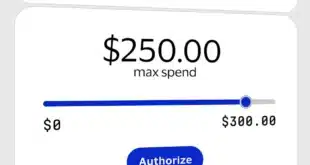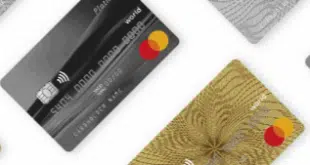The Covid-19 pandemic was a strong tailwind for the adoption of contactless payments. Two years later, the momentum is still there but challenges remain.
Whether it’s the convenience of not dipping a card into a POS terminal or speedier transactions at the point-of-sale, consumers and merchants continue to embrace contactless payments in the post-pandemic world.
A recent study by S&P Global Market Intelligence and 451 Research, commissioned by Discover Global Network, reveals that 45% of consumers ranked contactless payments as one of their preferred in-store payment methods, second only to cash (55%). Factors cited by consumers as to why they prefer contactless payments include convenience (76%) and an improved customer experience (73%).
Merchants were equipping their stores for contactless acceptance long before the Covid outbreak, and there’s been no letup now that the pandemic has waned. Stores have been aggressively deploying contactless terminals, with 92% saying they already accept or plan to accept contactless payments within the next 12 months, according to the S&P Global Market Intelligence report.
In addition, 82% of merchants surveyed say contactless payment, including tap and pay, is one of their most popular payment types. Indeed, observers say consumer usage of contactless payment technology, which includes contactless cards, mobile wallets and QR codes, shows no signs of abating.
“Contactless payment usage has not peaked. It may be getting close to peak in developed markets, but it has not peaked overall,” says Holly Worst, senior director of retail at the big payments processor FIS Inc. “The infrastructure is there to support contactless, as all new merchant terminals have contactless capability and the consumer demand is there. The key is to find new use cases to expand the technology’s reach.”
Potential use cases include transit, restaurants, electric-vehicle charging stations, and micro-merchants looking to leverage their smart phone or tablet computer as a payment terminal without adding a peripheral device.
‘A Smoother Process’
Of all these potential market segments for contactless, putting the technology into the hands of micro-merchants represents an intriguing opportunity, payments experts say.
With contactless technology, micro-merchants can download an applet to their phone that leverages the near-field communication technology within the phone to communicate with a contactless card. To accept a contactless payment, merchants simply open their contactless payment app, enter the transaction amount, and have the consumer tap their card to the phone.
Visa Inc. and Mastercard Inc. both support tap-on-phone payments for Android and iPhone smart phones. The method’s big advantage is that omits a card-reading attachment. “Tap-on-phone is a real benefit for micro-merchants because it spares them the cost of purchasing a dongle,” says Ainsworth Clark, vice president, product management, at Fiserv Inc.
Another use case for tap-on-phone is that it can make new-card activation easier for consumers. New contactless cards can come equipped with chips featuring an applet that can interact with a smart phone’s NFC chip and programmed so that when the card is tapped to a smart phone for the first time, the phone redirects the cardholder to the issuer’s Web site. There, the cardholder can activate the card, according to Barb Else, vice president for output solutions at Fiserv.
“Cardholders no longer have to call the card issuer to activate their card,” she says. “It’s a smoother process.”
Electric-vehicle charging stations represent an equallycompelling opportunity, argues Oliver Manahan, senior director, business development, for Infineon Technologies AG, a Germany-based semiconductor manufacturer.
In Canada, for example, many charging stations require consumers to download an app in which payment credentials can be stored, according to Manahan. Next, the consumer preloads value from a payment card into the app’s wallet, which is debited when charging. Enabling consumers to simply tap a contactless card instead would remove that friction, Manahan says.
‘A Security Issue’
Dine-in restaurants are another ripe opportunity. At many eateries, a server still brings the check to the table, takes the customer’s card, carries the card to a POS terminal to run the transaction, and then brings the receipt and the card back to the table. Instead, bringing a contactless POS terminal to the table would eliminate that friction, observers say.
“Most restaurants are old-school when it comes to payment,” says Mike Russo, chief technology officer for Shift4 Inc., a major player in payment acceptance for restaurants. “If a POS terminal is brought to the table, we think consumers will be more inclined to make use of the tap-to-pay capabilities, especially if they are made aware of that option.”
Shift4, which provides POS terminals to its merchants for free, has seen transactions made with contactless cards rise from 7% of its volume at the beginning of the Covid pandemic to more than 14% in October.
“Since Covid hit, we have shipped a lot of contactless pay-at-the-table devices to our restaurant merchants,” Russo says. “And because we provide our merchants with free terminals, most have devices that are contactless-enabled, which has helped push up our contactless volume.”
When it comes to transit, the business case for contactless is simple. Tap-and-go payment speeds throughput at the turnstile, especially during rush hour, payment experts say.
But experts argue consumer usage could rise even more by removing the requirement of entering a PIN for a contactless debit transaction and by raising the limit on the dollar amount of a transaction.
“It would strengthen the consumer’s perception of the speed of this payment method,” says Amit Chhabra, director of product management, merchants segment, at ACI Worldwide.
Card issuers have steadily increased the dollar limit on contactless transactions since the start of the pandemic, but payments experts question the wisdom of eliminating PINs for contactless debit. “It’s a security issue,” says Thad Peterson, a strategic advisor for the consulting firm Aite-Novarica Group. “Eliminating PINs for contactless debit transactions could lead to inconsistent adoption” by consumers and merchants, he adds.
A welcome piece of good news for the industry is that many chip manufacturers are signaling they intend to prioritize production of dual-interface chips, which allow cards to be used for both contact and contactless transactions, according to Fiserv’s Else. With that development, card issuers will have no choice but to issue contactless-enabled cards, and that in turn will expand the number of consumers carrying the cards.
“It will require some cardholder education by issuers about the tap-and-pay feature, but it will increase contactless card issuance,” says Else. “There are only so many chipmakers, and they are increasingly deciding to put their capacity behind dual-interface chips, which is more profitable for them.”
As a result, Fiserv is telling its card-issuing customers not to expect to be able to get contact-only chips in 2023, Else says.
Confused Consumers
Despite the opportunities for expanding contactless payments among merchants, some large merchants still have not jumped on the bandwagon.
Grocery chain Kroger Co. is an example, according Aite-Novarica’s Peterson. In addition, other large merchants are wavering on acceptance of some forms of contactless payments, such as The Home Depot Inc., which reportedly does not accept Apple Pay, according to payment experts.
For some merchants, the decision to replace POS terminals with devices that support contactless payments typically comes down to their terminal replacement cycles, payment experts say.
“Because almost all new deployed payment terminals are contactless enabled, the main barrier large merchants face is their own payment-device replacement cycle, as they will not accelerate it just to offer contactless capabilities,” Chhabra, says. “However, within their conventional refreshing cycle, they will eventually receive the additional benefit of contactless enablement.”
Other factors include the cost of training staff to support the technology and whether or not the merchant’s processor supports contactless payments. “Not every processor supports contactless acceptance yet,” says Manahan. “If that is the case, a merchant either needs to sign with a new processor that supports contactless acceptance or strike a relationship with a second processor just for contactless acceptance.”
When it comes to consumer acceptance, one factor slowing consumer adoption is that it is not always clear to consumers where to tap on the POS terminal. “The location of the antenna on the terminal for tap-and-pay transactions can vary by terminal maker,” Peterson says. “A consistent location for the antenna would make more sense.”
For consumers, this can be an embarrassing moment that sours them on using the technology again. “The biggest complaint we’ve seen consumers report in surveys has to do with ease of use,” says Sheridan Trent, director of Market Intelligence for the consulting firm The Strawhecker Group.
“Some consumers have issues with NFC technology at checkout working properly or they are not sure where to hold the card in order for the terminal to accept payment. [When that happens], some of those consumers have referenced feeling embarrassed when contactless options fail and a decreased likelihood of trying them again in the future,” she notes.
Despite the surge in contactless payments, some payment experts argue that contactless is still in the early stages of becoming mainstream payment technology, especially in the United States, where merchant adoption and card issuance have lagged that in other countries.
“Contactless adoption is still in its early days, and we believe that there is a more than five-year journey ahead to even represent most of the general processed transactions,” says Chhabra, who adds that one of the biggest obstacles remains changing “legacy consumer behavior” when it comes to using the technology.
“That said, this trend is highly regional and demographic-specific,” he adds, “But the good news is that the overall contactless usage is just starting, so the road ahead is exciting.”





